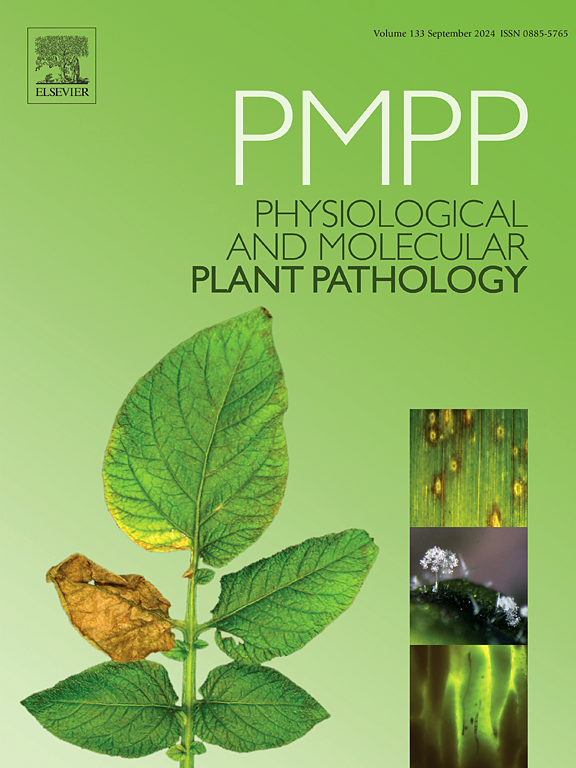Bacillus amyloliquefaciens D5 as a biocontrol agent against Cercospora Leaf Spot Disease in Vigna radiata L.
IF 2.8
3区 农林科学
Q2 PLANT SCIENCES
引用次数: 0
Abstract
Plant Growth-Promoting Rhizobacteria (PGPR) are beneficial microorganisms that inhabit the plant rhizosphere, promoting plant growth and enhancing soil health through various mechanisms. One of the key features of PGPR is their ability to produce secondary metabolites such as siderophores and exopolysaccharides (EPS), which play a critical role in plant growth promotion and biocontrol. Siderophores facilitate iron acquisition, which is essential for plant growth and microbial competition, while EPS contribute to biofilm formation, helping PGPR establish strong root colonization and protect plants from abiotic stress and pathogens. The study highlights the biocontrol potential of Bacillus amyloliquefaciens D5, isolated from soil in Vagadkhol, Bharuch district, India, which was found to produce 75 percent siderophore units of siderophore and 0.7 g of EPS. The isolate demonstrated significant antagonistic activity against Cercospora canescens, achieving 71.4 % fungal growth inhibition, while simultaneously promoting the growth of Vigna radiata by enhancing root colonization. These findings suggest that Bacillus amyloliquefaciens D5 may function as a biofertilizer and biocontrol agent, with the potential to reduce disease severity and improve plant health in agricultural systems.
求助全文
约1分钟内获得全文
求助全文
来源期刊
CiteScore
4.30
自引率
7.40%
发文量
130
审稿时长
38 days
期刊介绍:
Physiological and Molecular Plant Pathology provides an International forum for original research papers, reviews, and commentaries on all aspects of the molecular biology, biochemistry, physiology, histology and cytology, genetics and evolution of plant-microbe interactions.
Papers on all kinds of infective pathogen, including viruses, prokaryotes, fungi, and nematodes, as well as mutualistic organisms such as Rhizobium and mycorrhyzal fungi, are acceptable as long as they have a bearing on the interaction between pathogen and plant.

 求助内容:
求助内容: 应助结果提醒方式:
应助结果提醒方式:


